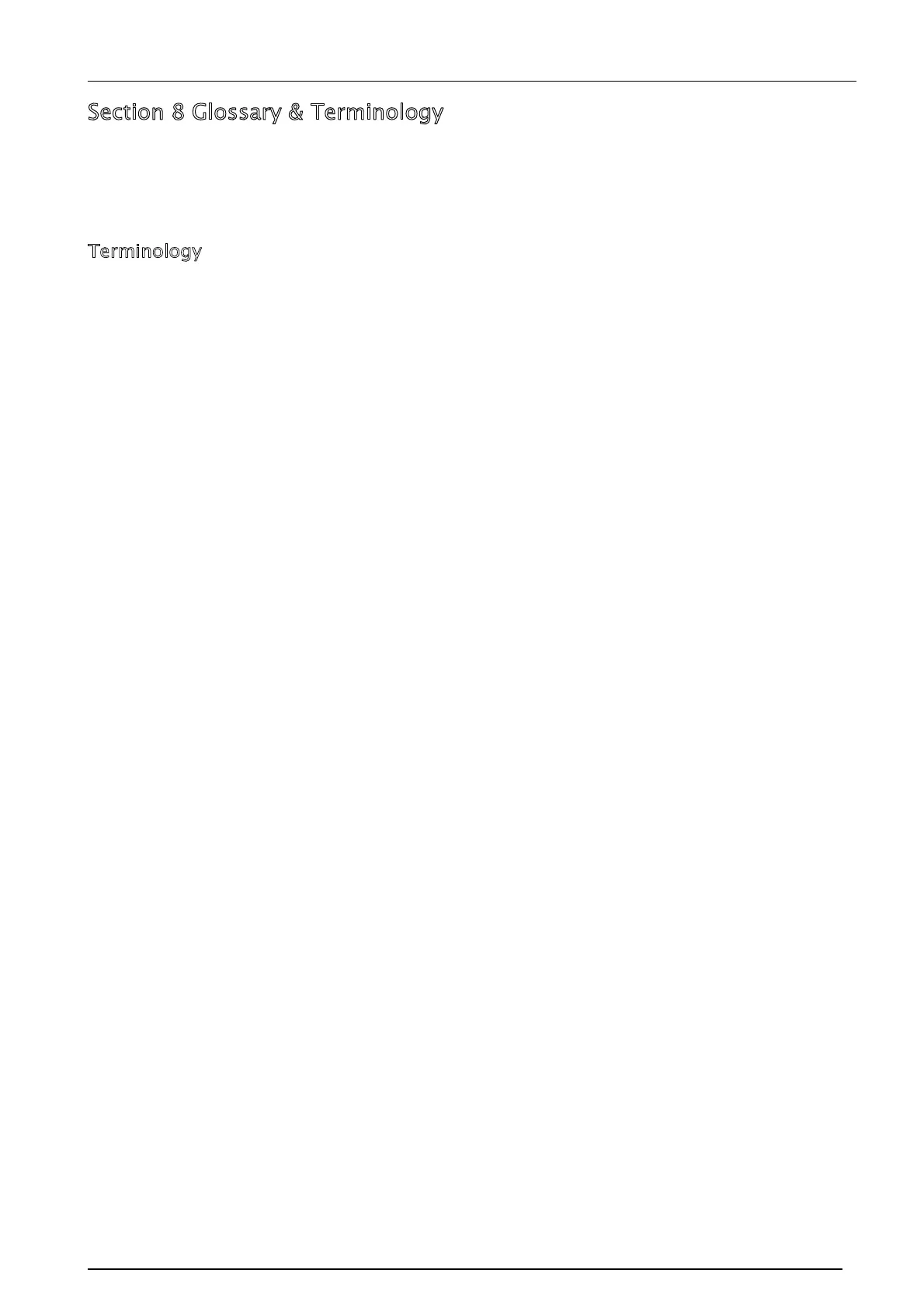dosemeter User Manual
Page 54
Section 8 Glossary & Terminology
The following section lists the acoustic terminology that is found in this manual and in
the MODEL 22 Personal Noise Dosemeter and MODEL 22R Reader unit. For further
information, please contact your local representative or Pulsar Instruments plc directly.
Terminology
The dosemeter and Reader can produce the following metrics as defined in the relevant
standards. Some of these are available on the Reader display, others require a printer
or the computer software supplied.
When the data is downloaded from the MODEL 22R Reader unit to the dosemeter
software, the following parameters are provided:
L
Aeq
The level which, if maintained constant for the same period as the measurement, would
contain the same amount of energy as the fluctuating noise level. "A" weighted and
expressed in decibels (dBA). Doubling the energy results in a 3dB change in the L
eq
.
This is denoted by Q=3. The Threshold used in the calculation of L
AVG
(see below) is not
used for the calculation of L
Aeq
.
For example:
If the noise level in a factory was a constant 85dB and the measurement period was 4
hours, the L
Aeq
would be 85dB(A).
L
AVG
L
AVG
is the average Sound Level over the measurement period when the exchange rate
(Q) is other than 3dB or where there is a Threshold applied or a Time Weighting
applied.
L
AVG
is the equivalent of L
eq
for exchange rates other than 3dB, for example Q=5. The
Threshold value is used during the calculation of L
AVG
with any levels below the
threshold not being included.
For example:
Assume the threshold level is set to 80dB and the exchange rate is 5dB (which are the
settings for OSHA's Hearing Conservation Amendment). If a one hour measurement
was taken in an environment where the noise levels varied between 50dB and 70dB,
the sound level would never exceed the threshold level and the instrument would
record no value for the L
AVG
. If the sound level exceeded the 80dB threshold for only a
few seconds, then only these seconds would contribute to the L
AVG
giving a level of
around 40dB which is much lower than the actual ambient sound levels in the
environment.
